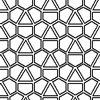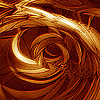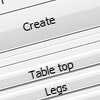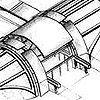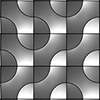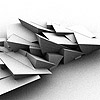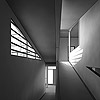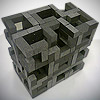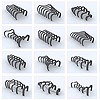One of the cult texts in Shape Grammars theory is Stiny‘s Chinese Ice-ray Lattices Grammars. Although it is full of technical terms, it represents an analysis of a working algorithm. We can directly transfer that from the behavior of an artist. “One can imagine a Chinese artisan, summoned to a building site. He brings tools and implements and a collection of finely finished sticks. Then, he begins his design by […]
March 2013
One of the main requirements of being successful in the field of digital design seems to have nice high-tech background images. Usually, it contains different kinds of nebula-like grids, plastic-explicit, and/or combinations of curves-surfaces-and-numbers, burnt by a couple of photoshop filters. If you have the right background, this means you are ready for a workshop, a book, or a presentation. (just joking) However, I love these, and cannot stand more than […]
Maxscipt can be used to automate specific modeling tasks in a sequential-parametric way. This example, developed in 2005 shows an example of that. It creates various table designs by polygon modeling operations and asks the user various parameters. Maxscript file is here, [MS File] you can download, test and alter it however you want (last tested in Max Design 2011 and works). Below is the interface of the script; There are […]
This month became a retrospective for me. This was my first animation, prepared for the CAAD Graduate course of Ahmet Turan Köksal in 2002. It was a funny inspiration from SDF-1 of Robotech. The terminal model is my graduation project at YTU Faculty of Architecture in 2001. It was a terminal bus project for İstanbul modeled in AutocadR14. I mirrored it with a ground plane to create the space station. Other spaceships and […]
Below is a part of Heidegger’s famous text, “The Question Concerning Technology”, on Techne, Epistinio, Poiesis; Revealing “… We are questioning concerning technology, and we have arrived now at Aletheia, at revealing. What has the essence of technology to do with revealing? The answer: everything. For every bringing-forth is grounded in revealing. Bringing forth, indeed, gathers within itself the four modes of occasioning – causality – and rules them throughout. […]
This elegant and straightforward tiling geometry is credited to Dominican priest Sebastien Truchet in 1704 and was documented in a book titled “Memoir sur les Combinasions” (A Memoir on Combinations). After delving into the renowned Truchet Patterns in 2013, I revisited their three-dimensional tiling counterparts today. This served as a valuable exercise in geometry during my previous Design Geometry course. I believe it enhances one’s proficiency in mastering the technical […]
After explaining the beautiful parquet deformations of William Huff, Douglas Hofstadter states his opinions about the algorithmic potentials of those patterns. Although it was 30 years ago, Hofstadter points out a fundamental discussion related to today’s parametric design tools; …for a machine to make simple variants of a given design, it must possess an algorithm for making that design which has explicit parameters; those parameters are then modifiable, as with […]
In 2007, we conducted a computational design studio in YTU / CADU with Birgül Çolakoğlu. Below is the brief of the paper published at METU JFA Vol24 issue 2 titled “An Innovative Design Education Approach: Computational Design Teaching For Architecture”. We were dealing with how new technologies are affecting the design cycle. Rhinoscript is used as an educational tool, and various short exercises are conducted with it. After 6 years, […]
This presentation was completed in 2007, as a part of a research project titled “Analytical Visuals in Architectural Design Studio”. We decided to use Le Corbusier’s Villa Savoye as our actor, trying lots of different visual effects and techniques to understand and express its fundamental design principles. Below are some of the elements we used in the project: some renders and panoramas along with a small video experiment. Modeling was […]
This was last week’s Basic Design II exercise at İstanbul Bilgi University, a captivating challenge that pushed students to explore the realm of solid and void compositions using pre-defined components. The objective was to construct intricate structures that intertwine solids and voids in visually striking ways. Recognizing that these compositions may be intricate and difficult to comprehend solely through visual outputs. The students were encouraged to prepare Rhino models as […]
Architectural education in its relation to computational technologies is both becoming a part of these studies and having the potential of renovating itself with the knowledge of emerging technologies. This paper, in this framework, will be presenting a design research studio that aims at developing relational thinking capabilities in the computational design process. In this studio, topics of parametric design, parametric modeling, and relationality were questioned through the design process. […]

